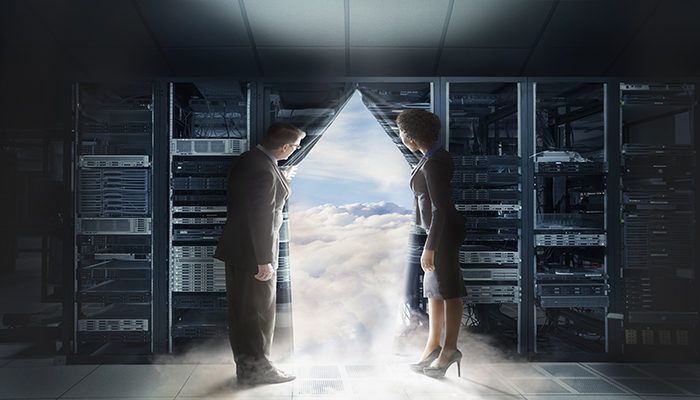When it comes to mainframe modernization, while pundits use different words, they all agree, job number one is to decide which of the three paths to modernization to take.
- Modernize in place
With this method, mainframe shops see the value in the platform, it’s just the operations that need to be streamlined. They will do things like reengineer processes, integrate silos, hire next-generation mainframers, and move to modern toolsets made for the mainframe platform. And while they’re doing all of that, they’ll make sure the platform and everything on it is fit-for-purpose, so that the mainframe is given the best opportunity to perform for the business. In keeping with that approach, they’ll remove workloads from the mainframe that can be better delivered elsewhere … especially workloads like backup and recovery.
- Modernize by moving away from the mainframe platform altogether
Other shops will decide to modernize their mainframe by outsourcing applications and processes to a SaaS provider, or they’ll rewrite their applications for cloud and open systems computing. As they move their applications to the cloud, they’ll modernize their business by concentrating on what made them great, and leave IT operational excellence and security to the IT experts and cloud/SaaS providers. For these businesses, “right-sizing” the platform means moving away from it entirely and putting all their mainframe workload in the cloud. Of course, before decommissioning the mainframe, all historically mainframe-generated backups of data assets and any active applications need to be archived in the cloud, as well.
- Modernize in a hybrid way, by integrating the mainframe environment to cloud
Or said another way, “Render unto cloud what is the cloud’s, and to the mainframe what is the mainframe’s…”
This group will split the difference, modernizing the mainframe by keeping some applications on the platform (generally speaking, the ones that turn the most transactions or require the most processing power), while simultaneously moving some applications off.
In truth, this type of migration has been happening consistently over the last several years, and in an evolutionary (as opposed to revolutionary) way, as applications like payroll, customer relationship management (CRM), and financials moved to SaaS providers like ADP, SFDC, SAP®, and Oracle. Companies have been migrating workloads off the mainframe for years, with the goal of rightsizing it and making it more fit for purpose. Again, for this group, offloading backup workloads to low-cost specialty engines, like the IBM® z Integrated Information Processor (zIIP), and storing mainframe backups in the cloud, dovetails perfectly with their desire to better utilize the mainframe’s compute power for applications that are core to the business.
Looking across the three mainframe modernization approaches mentioned above, the one common denominator is, “Let’s make sure we’re assigning workload to the right platform.”
BMC Mainframe Survey proves the point
Interestingly, among the BMC 2023 Mainframe Survey, many agree that mainframe backup and storage doesn’t belong on the mainframe’s general business-class compute engines. In fact, the following relevant insights floated to the top when we asked 800 mainframe customers about the future of their mainframes:
- Sixty-two percent said they perceive the mainframe as a platform upon which they can grow workloads (up from 52 percent of respondents who said the same in 2019), indicating that they are planning to either modernize in place, or via a hybrid cloud approach.
- With all this workload growth, petabytes of data and the number of databases themselves are growing—and they all need to be backed up, secured, and made available for recovery.
- Data: 61 percent of respondents say they’re seeing a significant increase in data volumes (up from 50 percent in 2019).
- Databases: 56 percent cited increasing numbers of databases (up from 40 percent in 2019).
- Thirty-five percent said connecting the mainframe to cloud technologies is one of their top four priorities in 2024.
- In keeping with rightsizing their mainframes, making them fit for purpose, and making their data more secure, 41 percent said they would be implementing a cloud-based approach to backup and storage in the next year.
When we look at the economics of today’s cloud-based approach to backup and storage systems, we see even more evidence that every company with a mainframe should move their backup processing to zIIP engines and store their backups in the cloud. Below we’ll look at the financial benefits that three important BMC customers, Garanti BBVA, Nedbank, and America First Credit Union, have achieved with a cloud-based backup methodology:
- Benchmarking before and after states, these three accounts achieved between 5x and 15x faster backups and restores with BMC AMI cloud-based solutions and reduced person hours associated with managing backups by 40 percent.
- Garanti BBVA reduced backup rack space by 86 percent.
- America First Credit Union reduced MIPS usage for backup and restore by 60 percent, and backup and virtual tape library software costs by 50 percent.
Other considerations
Then there are the “harder to benchmark” metrics that, when looked at from a business perspective, make just as much, if not more sense than all the technical reasons listed above. For instance, let’s consider the metrics for improved security and data mining for actionable insights.
Protection against ransomware attacks
BMC AMI Cloud backups are infinitely more secure than traditional backups because they are immutable and cannot be accessed by anyone without proper credentials for the mainframe—and the backup software itself. Further, they can never be altered in any way, such as encryption by an entity demanding ransom. These backups are also protected from malicious or unintentional deletion using cloud storage features such as object lock and versioning. These extra layers of controls make them impervious to ransomware attacks.
When we consider the damage that successful ransomware attacks have on the reputations of the companies attacked, and that the average ransom paid is $100K, choosing a storage platform that provides immutable backups and object lock is an obvious choice. It’s no wonder that 70 percent of BMC Mainframe Survey respondents said security is their top mainframe priority, and that Nedbank was able to reduce its data protection costs by 50 percent with BMC AMI Cloud’s immutable backups.
Leveraging mainframe backup data for actionable insights
If we think about it, we see that most companies’ backup data is so large that it essentially represents its own data lake. Yet, because mainframe data is stored in different formats than most data mining tools expect to see, it’s often overlooked when it comes to gleaning actionable insights for the business. When using BMC AMI Cloud backup tools, data is converted in a way that allows it to be analyzed, revealing actionable insights for the business to leverage.
Take as an example, a hypothetical insurance company with hidden mainframe backup data that reveals that 25 percent of its family clients have children reaching driving age this year. Because that mainframe backup data isn’t in a readable format for its analysis tools, it’s difficult to proactively propose additional coverage for these new drivers.
Or consider a bank that keeps backup data, which, if it could be analyzed, would highlight the families that have over $100K in a low-yield savings account, are expecting a child, and are renting their current home. Analysis of that data could show that they’d be a perfect candidate for a new home loan. The business development possibilities are endless here, but many companies don’t see it because their mainframe data is not “mineable,” as it is with BMC AMI Cloud backup solutions.
So, to pull this all together, companies can’t afford to wait when it comes to mainframe modernization. Just like the platform itself, traditional mainframe backups must also transition, especially given the expense of virtual tape library hardware and the software necessary to control it, the extra time and processing power it takes to complete traditional backups, the vulnerability of the data stored, and the difficulty of accessing it for analytical purposes. The only decision left is whether to modernize in place, modernize by moving off the platform, or modernize in a hybrid way.
To learn more about BMC AMI Cloud, click here, and join us on November 14 for a BMC webinar, “Mainframes in the cloud: modernizing data management.”
These postings are my own and do not necessarily represent BMC's position, strategies, or opinion.
See an error or have a suggestion? Please let us know by emailing [email protected].






